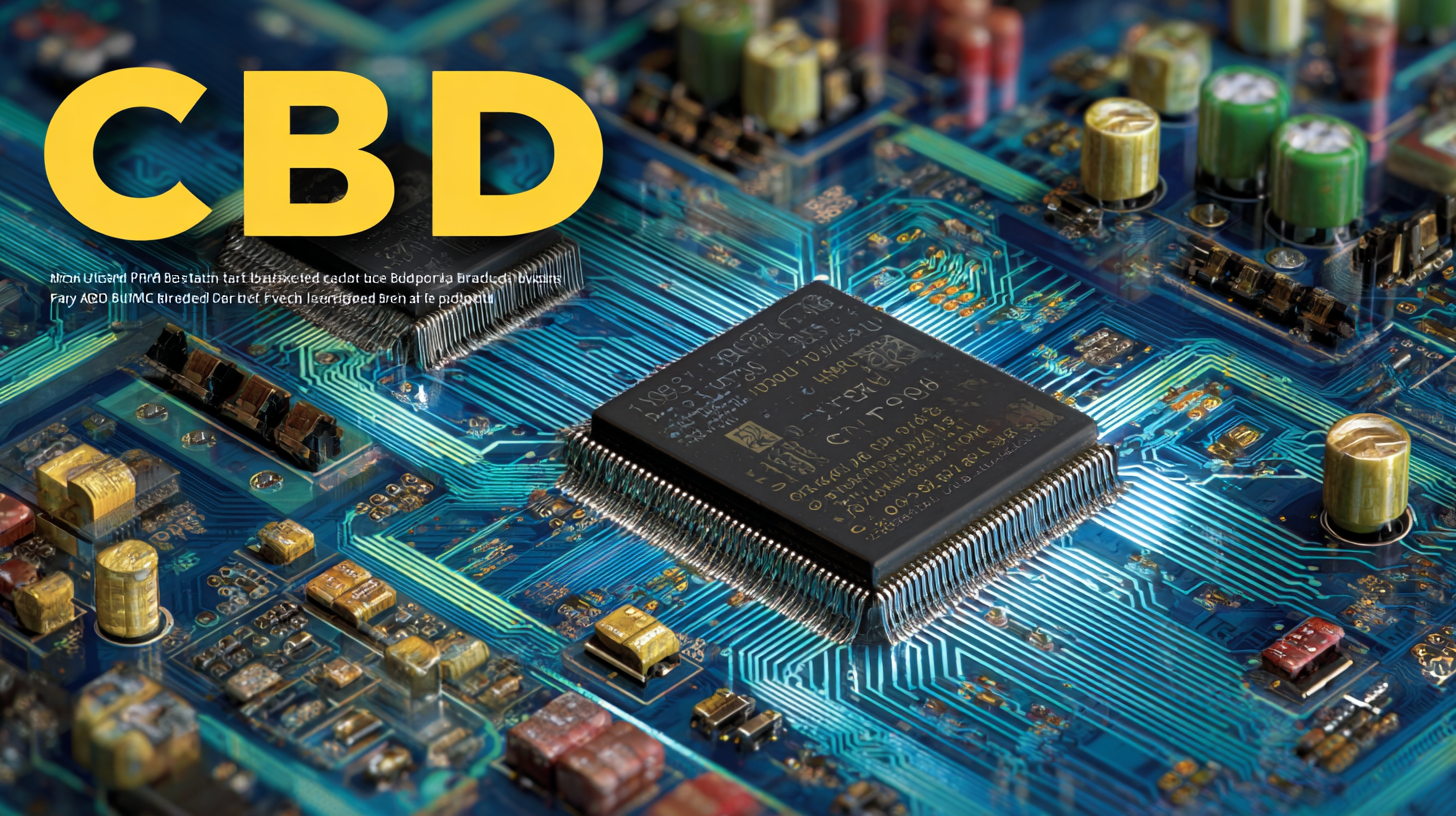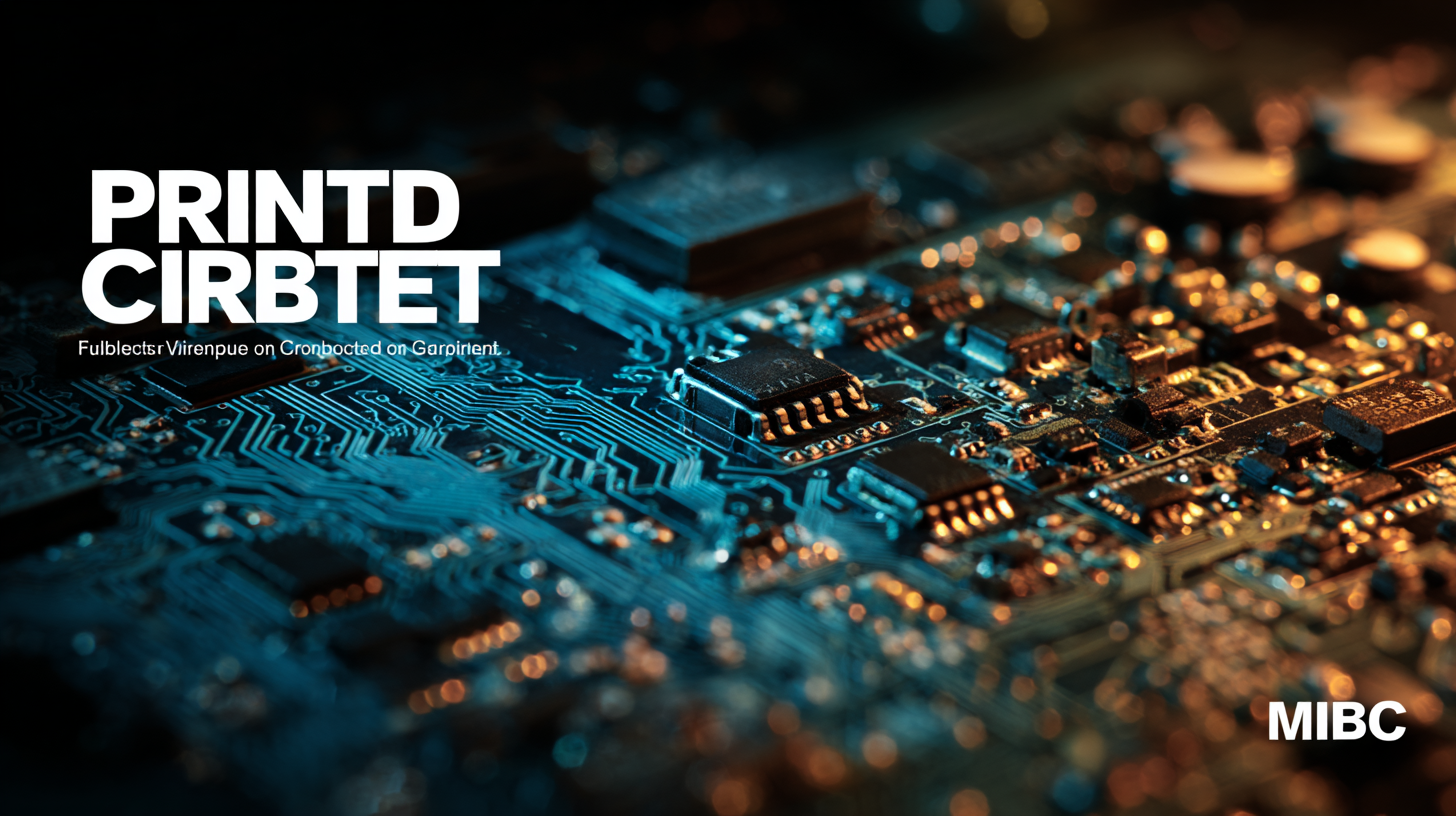Comprehensive Guide to Maximizing Performance with the Best Flexible Printed Circuit Boards in Modern Applications
In the rapidly evolving landscape of modern technology, the significance of Flexible Printed Circuit Boards (FPCBs) has never been more pronounced. According to a report by Fortune Business Insights, the global flexible printed circuit board market was valued at approximately USD 16.4 billion in 2021 and is projected to reach USD 28.5 billion by 2028, growing at a compound annual growth rate (CAGR) of 8.1%. This remarkable growth underscores the increasing demand for FPCBs across various industries, including consumer electronics, automotive, and medical devices, driven by their lightweight design, flexibility, and reliability in complex applications.

As Chinese manufacturers continue to innovate and enhance the quality of FPCBs, they are poised to expand their footprint in the global market, allowing them to compete on an international scale and meet the growing need for high-performance electronic solutions. The journey from China to the world illustrates a commitment to quality that can truly capture the global market's attention.
Understanding the Basics of Flexible Printed Circuit Boards (FPCBs) in Modern Electronics
 Flexible Printed Circuit Boards (FPCBs) have become a cornerstone in the design and functionality of modern electronics. These innovative circuit boards offer remarkable adaptability, allowing for intricate configurations that rigid boards cannot accommodate. According to a recent report from Research and Markets, the global flexible printed circuit board market is projected to reach $28.1 billion by 2025, demonstrating a compound annual growth rate (CAGR) of 10.6% from 2019. This growth highlights the increasing demand for lightweight, compact, and portable electronic devices across various industries, including consumer electronics, automotive, and medical devices.
Flexible Printed Circuit Boards (FPCBs) have become a cornerstone in the design and functionality of modern electronics. These innovative circuit boards offer remarkable adaptability, allowing for intricate configurations that rigid boards cannot accommodate. According to a recent report from Research and Markets, the global flexible printed circuit board market is projected to reach $28.1 billion by 2025, demonstrating a compound annual growth rate (CAGR) of 10.6% from 2019. This growth highlights the increasing demand for lightweight, compact, and portable electronic devices across various industries, including consumer electronics, automotive, and medical devices.
To maximize performance with FPCBs, consider these tips: ensure that your power requirements align with the circuit design, as this significantly influences efficiency and reliability. Additionally, proper thermal management is crucial—implement strategies such as thermal vias and controlled impedance to avoid overheating. Another key consideration is the choice of materials; selecting high-quality substrates can improve signal integrity and product life cycle.
FPCBs not only reduce the weight and size of electronic devices but also enhance their durability and flexibility. As technology advances, the necessity for FPCBs is only expected to rise, paving the way for even more advanced applications in wearable technology and IoT devices. Adapting to these trends now will ensure your designs remain competitive in an ever-evolving market.
Key Advantages of Using Flexible Printed Circuit Boards in Various Applications
Flexible Printed Circuit Boards (FPCBs) are revolutionizing various industries, particularly in automotive and consumer electronics, by providing unique advantages over traditional rigid boards. Their adaptable nature allows for intricate designs that can be integrated into tight spaces, offering unparalleled flexibility and optimization for next-generation devices. In addition, FPCBs can enhance performance by reducing weight and improving thermal dissipation, making them ideal for applications that require high reliability and efficiency under varied conditions.
The ongoing digitization of manufacturing processes emphasizes the importance of flexible circuits in modern electronic systems. With trends in 3D printing and the expansion of AI-powered devices, the demand for FPCBs is expected to grow significantly. Industries are focusing on innovations that accommodate evolving technological requirements, such as higher power capabilities and compact designs. The integration of FPCBs supports cutting-edge applications, paving the way for advancements in fields ranging from electric vehicles to wearable technology, thus showcasing their integral role in driving performance and innovation across multiple sectors.
Design Considerations for Optimal Performance of FPCBs
In the ever-evolving landscape of electronics, flexible printed circuit boards (FPCBs) have emerged as a pivotal element in modern applications. When designing FPCBs for optimal performance, several considerations must be addressed. Engineers must focus on factors such as material selection, layer stacking, and routing techniques to ensure that the boards can handle both mechanical flexing and electrical efficiency. The use of high-frequency materials can enhance signal integrity, while precise layer alignment can minimize crosstalk in densely populated circuits.
Recent industry trends indicate significant growth in the flexible printed circuit antenna market, projected to reach $410 million by 2030, reflecting a compound annual growth rate of 7.2% from 2024 to 2030. This surge highlights the increasing demand for high-speed, flexible connector solutions that seamlessly integrate into mobile platforms. As companies innovate to meet this demand, the focus on comprehensive design strategies for FPCBs becomes crucial. By leveraging advanced technologies and adhering to best practices in design, engineers can push the boundaries of performance and versatility in their products.
Best Practices for Selecting High-Quality Flexible Printed Circuit Boards
When selecting high-quality flexible printed circuit boards (FPCBs) for modern applications, it’s essential to understand the specific requirements of your project. According to a recent industry report by Smithers Pira, the global market for flexible circuits is projected to reach $24 billion by 2024, reflecting a growing demand in sectors such as automotive, consumer electronics, and medical devices. To navigate this landscape, consider parameters such as material properties, layer configuration, and thermal management during the selection process.
 Tip 1: Always choose FPCBs that utilize high-grade polyimide or polyester materials as they offer superior flexibility and thermal stability. This ensures the circuits can withstand high temperatures and maintain performance in demanding environments.
Tip 1: Always choose FPCBs that utilize high-grade polyimide or polyester materials as they offer superior flexibility and thermal stability. This ensures the circuits can withstand high temperatures and maintain performance in demanding environments.
Additionally, it’s crucial to evaluate the manufacturing capabilities of your suppliers. Not all manufacturers can meet the latest industry standards, such as IPC-2223. According to a study from the IPC, compliance with rigorous quality standards can reduce failure rates by up to 30%.
Tip 2: Look for suppliers with a proven track record and certifications, as this ensures quality and reliability in production.
Finally, future-proofing your designs is vital. With the rapid advancements in technology, consider FPCBs with higher layer counts and advanced features such as embedded components. This not only enhances performance but also optimizes space in miniaturized devices.
Tip 3: Collaborate closely with your PCB partner to explore innovative solutions that align with emerging market trends and technological advancements.
Future Trends and Innovations in Flexible Printed Circuit Board Technology
The landscape of flexible printed circuit boards (FPCBs) is rapidly evolving, driven by innovations and future trends that promise to reshape how we approach modern applications. As industries increasingly seek to miniaturize electronics while enhancing performance, FPCBs are at the forefront of this transformation. Innovations such as integrated sensors, improved materials, and advanced manufacturing techniques are allowing for greater flexibility and functionality. This is particularly evident in sectors like wearables and IoT devices, where compact design is paramount.
To harness the full potential of modern FPCB technology, consider implementing a few key tips. First, prioritize high-quality materials that offer durability and performance under various environmental conditions. Selecting the right substrate material can significantly affect the overall reliability of the circuits. Additionally, stay updated with the latest design software that facilitates the creation of more intricate layouts, accommodating the increasing complexity of electronic devices. Lastly, collaborate closely with manufacturers to ensure an optimized production process, focusing on minimizing waste while maximizing efficiency.
Another trend worth noting is the increasing incorporation of environmental sustainability in FPCB production. As eco-consciousness rises, manufacturers are exploring biodegradable and recyclable materials. Companies should consider investing in sustainable practices not only to meet regulatory demands but also to align with consumer preferences for greener products. By embracing these innovations and tips, businesses can ensure they remain competitive in an ever-evolving technological landscape.
Comprehensive Guide to Maximizing Performance with the Best Flexible Printed Circuit Boards in Modern Applications - Future Trends and Innovations in Flexible Printed Circuit Board Technology
| Feature |
Description |
Applications |
Future Trends |
| Material Flexibility |
Ability to bend and conform to various shapes. |
Wearable electronics, medical devices. |
Increased use of advanced polymers. |
| Weight Reduction |
Lighter overall design, reducing load on devices. |
Smartphones, drones. |
Integration with lightweight components. |
| Thermal Performance |
Enhanced heat dissipation mechanisms. |
LED lighting, high-performance computing. |
Development of novel thermal materials. |
| Signal Integrity |
Improved electrical properties for data transmission. |
Telecommunications, automotive systems. |
Advanced dielectric materials to minimize loss. |
| Manufacturing Efficiency |
Simplified fabrication processes and scalability. |
Consumer electronics, industrial devices. |
Adoption of automation in production. |